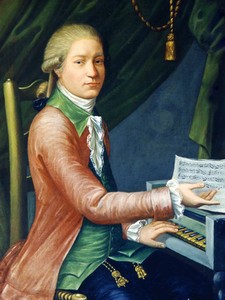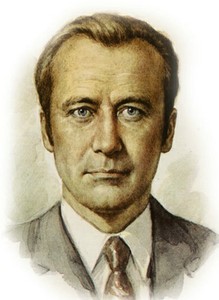
Evstigney Ipatovich Fomin |
Evstigney Fomin

E. Fomin is one of the talented Russian musicians of the XNUMXth century, whose efforts created a national school of composers in Russia. Together with his contemporaries – M. Berezovsky, D. Bortnyansky, V. Pashkevich – he laid the foundations of Russian musical art. In his operas and in the melodrama Orpheus, the breadth of the author’s interests in the choice of plots and genres, mastery of various styles of the opera theater of that time was manifested. History was unfair to Fomin, as, indeed, to most other Russian composers of the XNUMXth century. The fate of a talented musician was difficult. His life ended untimely, and soon after his death his name was forgotten for a long time. Many of Fomin’s writings have not survived. Only in Soviet times did interest in the work of this remarkable musician, one of the founders of Russian opera, increase. Through the efforts of Soviet scientists, his works were brought back to life, some meager data from his biography were found.
Fomin was born into the family of a gunner (artillery soldier) of the Tobolsk Infantry Regiment. He lost his father early, and when he was 6 years old, his stepfather I. Fedotov, a soldier of the Life Guards of the Izmailovsky regiment, brought the boy to the Academy of Arts. April 21, 1767 Fomin became a student of the architectural class of the famous Academy, founded by Empress Elizaveta Petrovna. All the famous artists of the XNUMXth century studied at the Academy. – V. Borovikovsky, D. Levitsky, A. Losenko, F. Rokotov, F. Shchedrin and others. Within the walls of this educational institution, attention was paid to the musical development of students: the students learned to play various instruments, to sing. An orchestra was organized at the Academy, operas, ballets, and dramatic performances were staged.
Fomin’s bright musical abilities manifested themselves even in the elementary grades, and in 1776 the Council of the Academy sent a student of “architectural art” Ipatiev (as Fomin was often called then) to the Italian M. Buini to learn instrumental music – playing the clavichord. Since 1777, Fomin’s education continued in the music classes that opened at the Academy of Arts, headed by the famous composer G. Paypakh, author of the popular opera The Good Soldiers. Fomin studied music theory and the basics of composition with him. Since 1779, the harpsichordist and bandmaster A. Sartori became his musical mentor. In 1782 Fomin brilliantly graduated from the Academy. But as a student of the music class, he could not be awarded a gold or silver medal. The Council noted him only with a cash prize of 50 rubles.
After graduating from the Academy, as a pensioner, Fomin was sent for improvement for 3 years to Italy, to the Bologna Philharmonic Academy, which was then considered the largest musical center in Europe. There, under the guidance of Padre Martini (teacher of the great Mozart), and then S. Mattei (with whom G. Rossini and G. Donizetti later studied), a modest musician from distant Russia continued his musical education. In 1785, Fomin was admitted to the exam for the title of academician and passed this test perfectly. Full of creative energy, with the high title of “master of composition,” Fomin returned to Russia in the autumn of 1786. Upon arrival, the composer received an order to compose the opera “Novgorod Bogatyr Boeslaevich” to the libretto of Catherine II herself. The premiere of the opera and Fomin’s debut as a composer took place on 27 November 1786 at the Hermitage Theatre. However, the empress did not like the opera, and this was enough for the career of a young musician at court to be unfulfilled. During the reign of Catherine II, Fomin did not receive any official position. Only in 1797, 3 years before his death, he was finally accepted into the service of the theater directorate as a tutor of opera parts.
It is not known how Fomin’s life proceeded in the previous decade. However, the creative work of the composer was active. In 1787, he composed the opera “Coachmen on a Frame” (to a text by N. Lvov), and the following year 2 operas appeared – “Party, or Guess, Guess the Girl” (music and libre have not been preserved) and “The Americans”. They were followed by the opera The Sorcerer, the Soothsayer and the Matchmaker (1791). By 1791-92. Fomin’s best work is the melodrama Orpheus (text by Y. Knyaznin). In the last years of his life, he wrote a chorus for V. Ozerov’s tragedy “Yaropolk and Oleg” (1798), the operas “Clorida and Milan” and “The Golden Apple” (c. 1800).
Fomin’s opera compositions are diverse in genres. Here are Russian comic operas, an opera in the Italian buffa style, and a one-act melodrama, where the Russian composer first turned to a lofty tragic theme. For each of the selected genres, Fomin finds a new, individual approach. Thus, in his Russian comic operas, the interpretation of folklore material, the method of developing folk themes, attracts primarily. The type of Russian “choral” opera is especially vividly presented in the opera “Coachmen on a Setup”. Here the composer makes extensive use of different genres of Russian folk songs – drawling, round dance, dance, uses the techniques of under-voice development, juxtaposition of solo melody and choral refrain. The overture, an interesting example of early Russian program symphonism, was also built on the development of folk song dance themes. The principles of symphonic development, based on the free variation of motives, will find wide continuation in Russian classical music, starting with M. Glinka’s Kamarinskaya.
In the opera based on the text of the famous fabulist I. Krylov “The Americans” Fomin brilliantly showed mastery of the opera-buffa style. The pinnacle of his work was the melodrama “Orpheus”, staged in St. Petersburg with the participation of the famous tragic actor of that time – I. Dmitrevsky. This performance was based on a combination of dramatic reading with orchestra accompaniment. Fomin created excellent music, full of stormy pathos and deepening the dramatic idea of the play. It is perceived as a single symphonic action, with continuous internal development, directed to a common climax at the end of the melodrama – “Dance of the Furies”. Independent symphonic numbers (overture and Dance of the Furies) frame the melodrama like a prologue and an epilogue. The very principle of comparing the intense music of the overture, the lyrical episodes located in the center of the composition, and the dynamic finale testify to Fomin’s amazing insight, who paved the way for the development of the Russian dramatic symphony.
The melodrama “has been presented several times at the theater and deserved great praise. Mr. Dmitrevsky, in the role of Orpheus, crowned her with his extraordinary acting,” we read in an essay about Knyaznin, prefaced by his collected works. On February 5, 1795, the premiere of Orpheus took place in Moscow.
The second birth of the melodrama “Orpheus” took place already on the Soviet stage. In 1947, it was performed in a series of historical concerts prepared by the Museum of Musical Culture. M. I. Glinka. In the same years, the famous Soviet musicologist B. Dobrokhotov restored the score of Orpheus. The melodrama was also performed in concerts dedicated to the 250th anniversary of Leningrad (1953) and the 200th anniversary of Fomin’s birth (1961). And in 1966 it was first performed abroad, in Poland, at the congress of early music.
The breadth and variety of Fomin’s creative searches, the bright originality of his talent allow us to rightfully consider him the greatest opera composer of Russia in the XNUMXth century. With his new approach to Russian folklore in the opera “Coachmen on a Set-up” and the first appeal to the tragic theme in “Orpheus”, Fomin paved the way for the opera art of the XNUMXth century.
A. Sokolova





